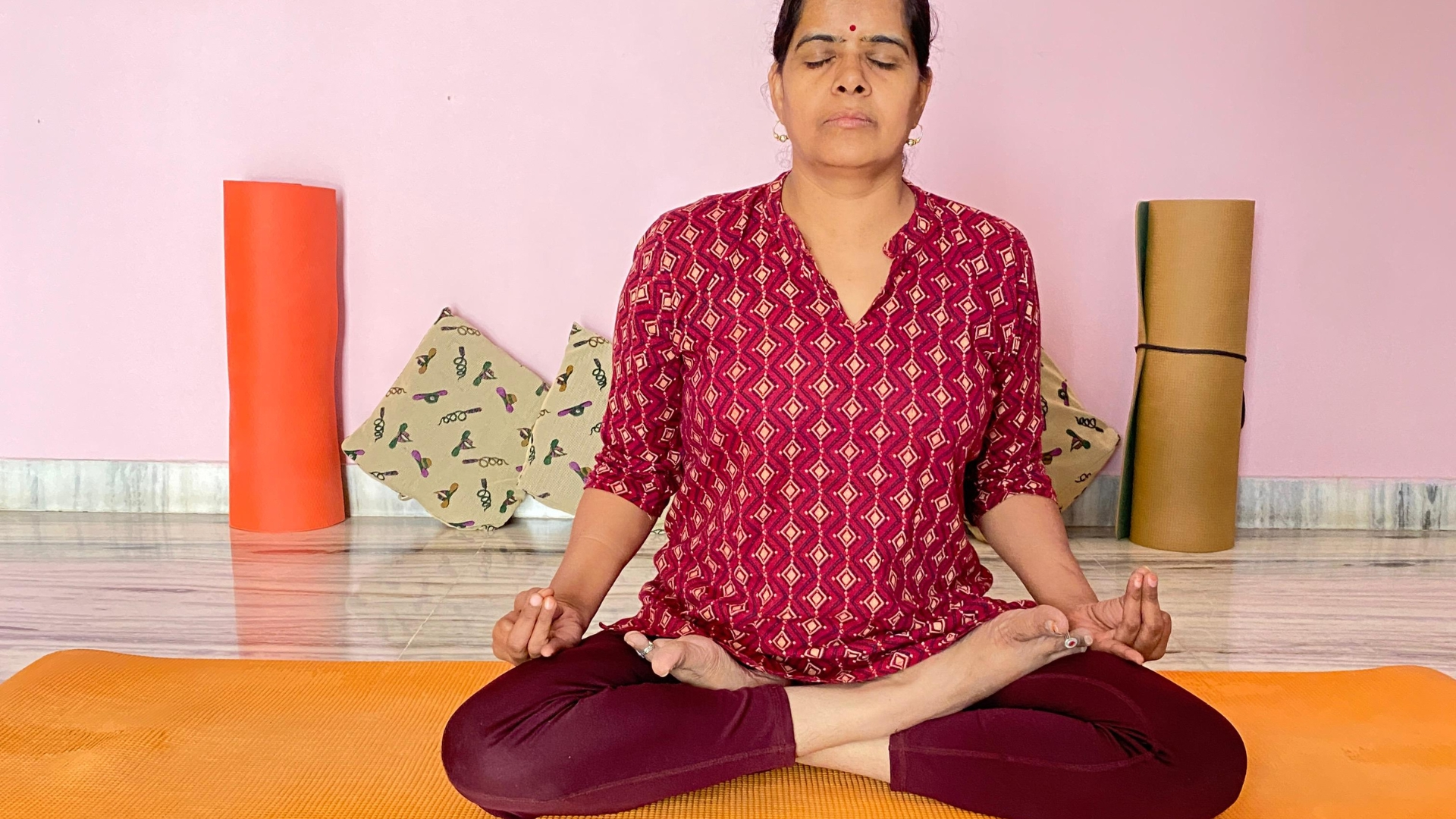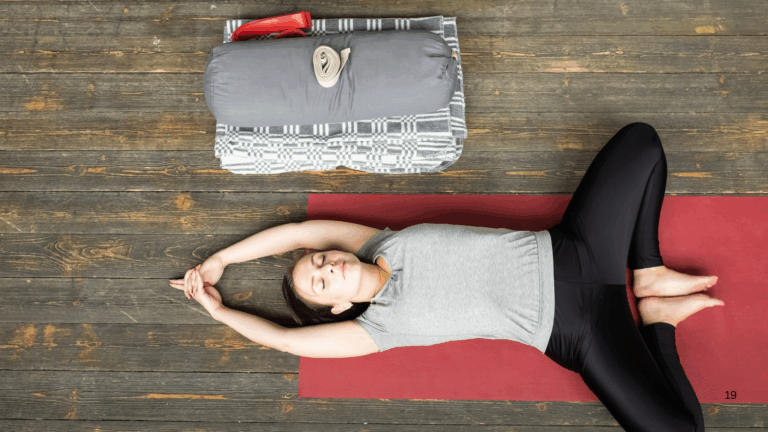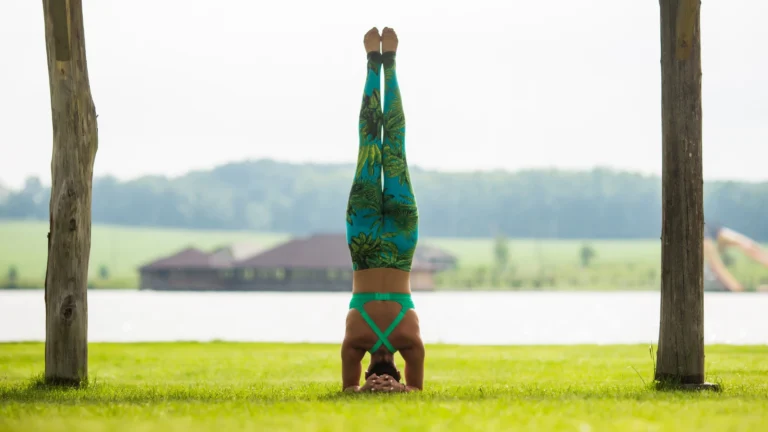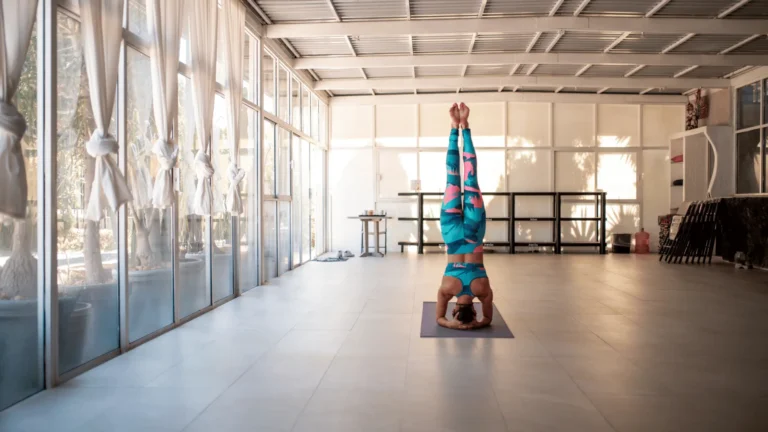Padmasana – The Lotus Pose | Steps, Benefits, Tips, Cautions
Padmasana, commonly known as the Lotus Pose, holds a significant place in the realm of yoga. Derived from the Sanskrit words ‘Padma,’ meaning lotus, this asana symbolizes purity, symmetry, and balance. You can make the shape of a blooming lotus flower on the mat by crossing your legs and moving your feet to rest on your thighs! Besides looking graceful, this pose allows you to feel a sense of peace and connection.
Padmasana isn’t only a physical workout; it also promotes relaxation, concentration, and a sense of inner harmony. However, like with learning any new skills, go slowly and treat yourself well as you go. This pose cultivates mindfulness and promotes healthy habits for all ages, making it a versatile addition to one’s routine.
As we explore Padmasana, we will discover the amazing things this pose can do for our bodies and minds and learn some helpful tips to make the experience more enjoyable. It’s equally important to be cautious and listen to your body while doing this pose.
Let’s explore the steps, benefits, and cautions associated with this profound yoga posture.
What are the Steps Of Padmasana?

Image credit : Yoga an instruction booklet by Vivekananda kendra prakshan trust
Step 1:
Begin in a seated position with your legs stretched out and heels together. Place your palms on the floor beside your buttocks for support.
Step 2:
Bend your right leg at the knee and place your right heel at the root of your left thigh.
Step 3:
Similarly, bend your left leg at the knee and place your left heel at the root of your right thigh. Rest your palms on your knees, facing upwards. Join the tips of your thumb and forefinger, keeping the other fingers straight. Sit erect, embracing a relaxed state of being.
Step 4:
To release from the posture, unfold your left leg and return to Step 2.
Step 5:
Continuing to maintain the balance, unfold your right leg and return to the initial seated position in Step 1.
Padmasana is a pose of mindfulness. As you stand tall and firm, imagine yourself rooted deep into the earth like a mountain. Focus on your breath, allowing it to flow smoothly in and out, calming your mind and steadying your heartbeat. This posture encourages a sense of presence and awareness, helping practitioners connect with their inner selves.
How Long To Sit In Padmasana?

- Beginners:
Start with 1-2 minutes, gradually increasing as flexibility improves.
- Intermediate Practitioners:
Aim for 5-10 minutes, focusing on comfort and proper alignment.
- Advanced Practitioners:
Can sit for 30 minutes or more, using props for support if needed.
Always prioritize comfort, listen to your body, and consult an expert if you have any concerns.
Tips for Practicing Padmasana:
Start with the Feet:
Pay close attention to your feet. Feel the ground beneath you and distribute your weight evenly across both feet.
Engage Muscles:
Keep your thighs engaged and your abdominal muscles gently pulled in. This engagement provides a stable foundation for the pose.
Elongate the Spine:
Imagine a string pulling you from the top of your head towards the sky. Lengthen your spine, keeping it straight and strong.
Relax Your Shoulders:
Roll your shoulders back and down, allowing your chest to open up. This position enhances lung capacity and deep breathing.
What Are The Benefits of Padmasana?

Balance of Energy Flow:
One of the primary benefits of Padmasana is its ability to balance the flow of energy, often referred to as prana or life force, throughout the body. In yogic philosophy, it is believed that specific postures can channel energy in particular ways. Padmasana, with its symmetrical and grounded position, encourages a harmonious flow of energy from the base of the spine to the crown of the head. This balanced energy flow revitalizes the entire body, enhancing vitality and promoting a sense of overall well-being. When energy moves freely and evenly, it fosters a sense of equilibrium, both physically and mentally.
Inner Awareness:
Padmasana serves as an invaluable tool in the practice of Antaranga yoga, the yoga of inner awareness. By assuming a steady and comfortable posture, practitioners can sit in Padmasana for extended periods during meditation or introspective practices. The stability of the pose allows individuals to delve deep within themselves, cultivating heightened awareness and concentration. This inner awareness is not limited to the duration of the practice but extends into daily life, promoting mindfulness, clarity of thought, and emotional stability.
Physical Flexibility:
Regular practice of Padmasana contributes significantly to enhancing flexibility, specifically in the hip and knee joints. As the posture involves bending the knees and crossing the legs, it gently stretches and opens the hips. Over time, this stretching increases the range of motion in the hip joints, promoting suppleness in the lower body. Additionally, the pose stimulates the knee joints, improving their flexibility. Increased hip and knee flexibility not only aids in the practice of yoga but also contributes to better posture, reduced risk of injuries, and improved overall joint health.
You can also read our blog about VAJRASANA – The Ankle Pose: Steps and Benefits to know about Vajrasana.
Who Should Avoid Padmasana?
While Padmasana offers numerous benefits and safe yoga practice for Kids and Elders, it’s crucial to approach the posture with care, especially for individuals dealing with severe arthritis.
Here are a few precautions to keep in mind:
Arthritis Patients: Individuals suffering from severe arthritis should practice Padmasana cautiously. It’s advisable to consult a yoga instructor or healthcare professional before attempting this posture.
Pregnant Women: Pregnant women, especially in the later stages of pregnancy, should avoid Padmasana due to the pressure it puts on the abdomen.
Conclusion:
Padmasana, the Lotus Pose, not only nurtures physical flexibility but also cultivates a sense of balance and inner harmony. By embodying the essence of a lotus flower, practitioners can connect with the symbolic purity and symmetry, both within themselves and the universe. Remember, yoga is not just a physical practice; it’s a journey that unites the body, mind, and spirit, and Padmasana stands as a beautiful testament to this holistic approach. As with any yoga practice, approach it with mindfulness, respect for your body, and a sense of inner peace.



